Your Ultimate Guide
Welcome to Outfory.com, where our passion for the highest quality fitness essentials helps you make informed decisions! Today, we’re diving deep into the world of High-Quality Performance Yoga Mats. Whether you’re a yoga novice or a seasoned practitioner, the right yoga mat can transform your practice. Let’s explore how to find that perfect mat, understand its benefits, and spotlight the brands that stand out in the yoga community. 🧘♀️✨
A top-notch yoga mat is more than just a piece of equipment; it’s your foundation for a safe, effective, and comfortable practice. Here are some benefits of investing in a quality yoga mat:
Choosing the perfect yoga mat can be overwhelming, but focusing on a few key factors can help simplify the process:
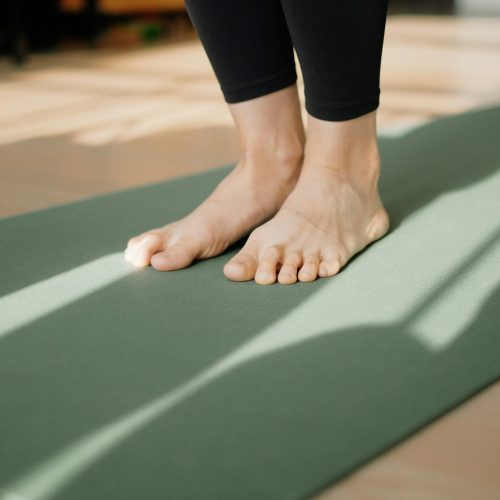
Options include PVC (durable and sticky), TPE (eco-friendly and recyclable), and natural rubber (eco-conscious and grippy).

A standard mat is about 1/8 inch thick. Go thicker for more cushioning, or thinner for a stronger connection to the floor.
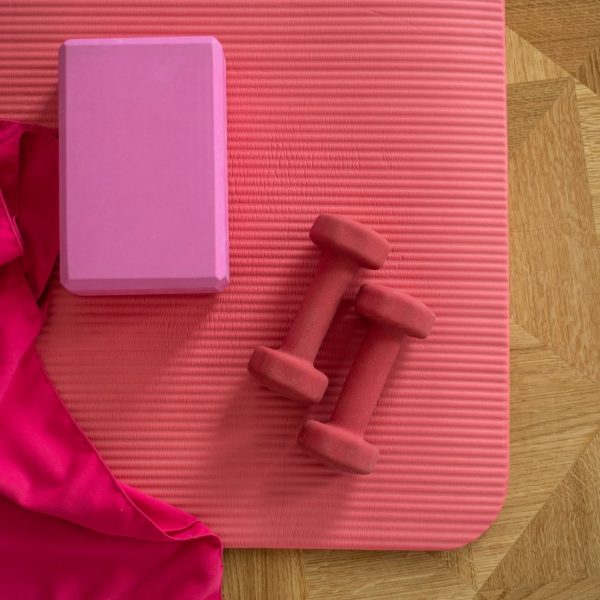
This impacts your mat's grip. From smooth PVC to jute’s organic roughness, the choice depends on your personal preference.
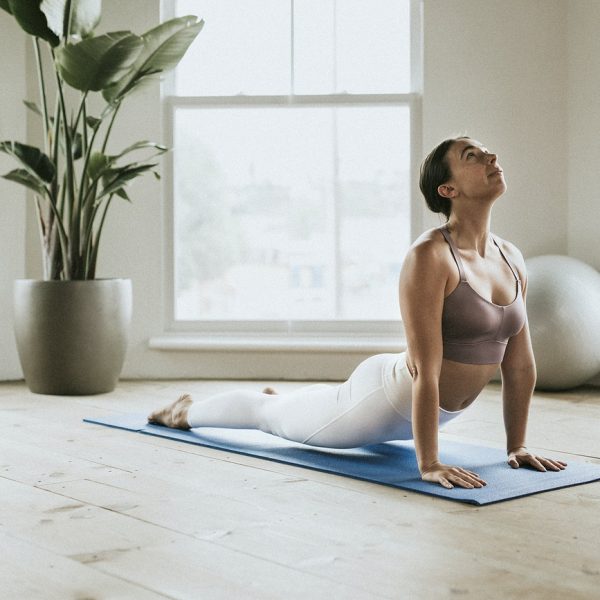
Ensure your mat fits your body and gives you ample space to move. Extra-long and wide mats are available.
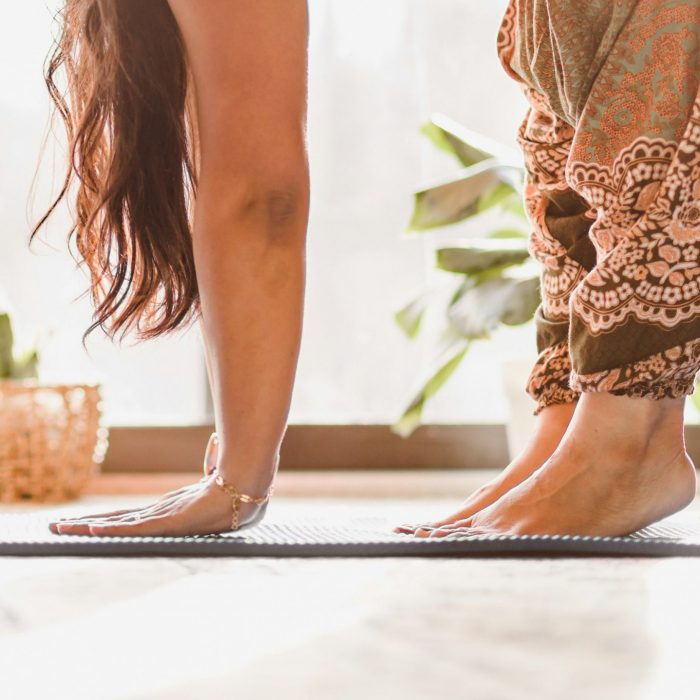
Consider mats made from sustainable materials if environmental impact is important to you.
When embarking on the journey to elevate your yoga experience, selecting an ideal yoga mat is essential. Delve deeper with us as we explore a selection of distinguished brands and their exceptional products, aiming to connect you with a yoga mat that perfectly aligns with your practice and preferences.
The Manduka PRO stands out for its unparalleled durability and cushioning. At 6mm thick, it offers ample joint protection without compromising stability. It’s made from high-quality, eco-friendly PVC, which is Oeko-Tex certified, meaning it’s free from harmful substances. The closed-cell surface prevents sweat from seeping in, making it easy to clean and maintain.
Serious yogis looking for a long-term investment. Its lifetime guarantee underscores its durability.
Made with emissions-free manufacturing, it’s a choice that’s kinder to the planet.
Superior durability, lifetime guarantee, great cushioning.
It’s heavier than other mats, making it less portable. The surface can be slippery until it’s properly broken in.
The Liforme mat is renowned for its innovative GripForMe material, which provides unmatched grip, even during the most intense practices. The mat features unique AlignForMe markers, helping practitioners of all levels perfect their alignment. It’s made from naturally sourced sustainable rubber and is PVC-free.
Yogis of all levels, especially those looking to improve their posture and alignment in poses.
Biodegradable and made from non-toxic materials, it’s an eco-conscious choice.
Exceptional grip, innovative alignment system, eco-friendly.
The higher price point and the fact that it wears down faster than some other premium options.
The Jade Harmony Mat is a hit for its perfect balance of traction and cushioning. Made from natural rubber tapped from rubber trees, it offers a great grip and a 5mm thickness that cushions your body while providing firm support. It’s available in a variety of lengths and colors.
Eco-conscious yogis and those who appreciate a natural product with excellent grip and cushioning.
Jade plants a tree for every mat sold, enhancing its commitment to environmental sustainability.
Great grip, eco-friendly, company plants a tree for every mat sold.
The natural rubber smell may be strong at first, and it requires proper care to maximize lifespan.
Designed specifically for hot yoga and high-intensity practices, the Gaiam Performance Dry-Grip mat stays slip-free, thanks to a top coat that wicks away moisture. It’s PVC-free, latex-free, and offers 5mm of cushioning for comfort in various poses.
Hot yoga practitioners and anyone who sweats a lot during their practice.
Free from the six most harmful phthalates, making it a healthier choice for you and the environment.
Excellent for hot yoga, moisture-wicking surface, good cushioning.
May not be as durable as some other premium mats, particularly with very frequent use.
The Yoloha Aura mat combines the natural, sustainable qualities of cork with the durability of rubber. Cork is naturally antimicrobial, preventing bacteria and odors. It also provides superior grip, which improves with moisture. The mat is lightweight, making it easy to carry to and from class.
Yogis looking for a sustainable, lightweight mat with great grip and a unique aesthetic.
Made from renewable resources, cork is biodegradable, and the mat itself is recyclable.
Lightweight, antimicrobial, excellent grip, sustainable materials.
Cork’s texture may not appeal to everyone, and it can show wear over time.
Embarking on your yoga journey or deepening your practice brings with it a whole new lexicon, especially when it comes to choosing the right yoga mat. Understanding these terms can significantly enhance your decision-making process, ensuring you find a mat that truly meets your needs. Here’s a breakdown of essential yoga mat terminology to get you acquainted:




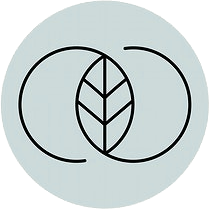


A yoga mat is not just a piece of equipment—it’s a companion on your journey to wellness and mindfulness. Proper care and maintenance of your yoga mat not only extend its life but also ensure a hygienic and pleasant practice environment. Here are essential tips to keep your mat in top condition:
Taking care of your yoga mat is a simple yet effective way to ensure a clean, safe, and enjoyable yoga experience. By following these maintenance tips, you’re not just looking after your mat; you’re investing in your continued journey toward health and mindfulness.
The ideal thickness depends on your personal preference and the type of yoga you practice. A standard mat is about 1/8 inch (3 mm) and offers a good balance for most practices. If you need extra cushioning for your joints, consider a thicker mat, around 1/4 inch (6 mm). For travel or closer floor connection, a thinner mat, about 1/16 inch (1.5 mm), might be best.
Absolutely! A good yoga mat can be used for a variety of exercises, including Pilates, stretching, and general fitness workouts. Just ensure that your mat’s material and thickness support the type of activity you’re engaging in.
This varies depending on how frequently you use your mat and how well you maintain it. Signs that it’s time for a new mat include noticeable wear and tear, diminished grip, and persistent odors despite cleaning.
PVC mats are durable and provide great grip, but they have faced scrutiny for environmental and health concerns due to the presence of phthalates and other chemicals. If you’re concerned about safety, look for PVC mats that are Oeko-Tex certified, indicating they are free from harmful substances. Alternatively, consider eco-friendly materials like TPE, natural rubber, or cork.
New yoga mats, especially those made from rubber, may have a strong odor. To reduce the smell, unroll your mat and air it out for a few days in a well-ventilated area. Cleaning it with a mild soap solution or a vinegar-water mix can also help eliminate odors.
Not necessarily. Some mats have a break-in period, especially those made from natural rubber. If your mat is slippery, try washing it with a mild detergent to remove any manufacturing residues. Consistent use and proper cleaning often improve grip over time.
Most mats can be cleaned with a soft cloth, water, and mild detergent. Some can even be gently submerged in soapy water for a deep clean. Avoid using harsh chemicals or abrasive brushes, as these can damage the mat’s surface. Always check the manufacturer’s recommendations for specific cleaning instructions.
Yes, eco-friendly yoga mats have come a long way in terms of performance and durability. Materials like TPE, natural rubber, and cork provide excellent grip, cushioning, and are comparable to conventional PVC mats in their functionality.
Peeling or flaking often indicates wear and tear, suggesting it might be time for a new mat. To prolong its life, avoid over-cleaning or using harsh detergents, and store your mat properly. Once a mat begins to degrade, it’s best to replace it to ensure safety and comfort during your practice.
Choosing the right yoga mat is more than just picking out a color or pattern—it’s about finding a companion that supports your practice, aligns with your values, and enhances your journey toward mindfulness and wellness. Whether you’re just starting out or deepening your practice, the right mat can make all the difference.
Remember, the perfect yoga mat for you is one that meets your specific needs in terms of comfort, material, sustainability, and maintenance. Consider what practices you’ll be engaging in, your physical requirements, and your environmental impact. Each mat has its own set of benefits, and what works best for one yogi may not suit another.
Taking care of your yoga mat through regular cleaning and proper storage will extend its life and ensure a hygienic practice space. And as your practice evolves, don’t be afraid to reassess your needs and explore different mats. Your journey is unique, and your yoga mat is a vital part of that journey.
We hope this guide has illuminated the path toward selecting your ideal yoga mat, armed you with the knowledge to care for it, and answered some of your pressing questions. At Outfory.com, we’re here to support you at every step of your fitness and wellness journey. Embrace the practice, explore with curiosity, and enjoy the profound benefits that yoga brings to body, mind, and spirit.
Namaste 🙏 and happy practicing. Here’s to finding the perfect mat that rolls out the path to discovery, growth, and peace within your yoga journey.
| Cookie | Duration | Description |
|---|---|---|
| cookielawinfo-checbox-analytics | 11 months | This cookie is set by GDPR Cookie Consent plugin. The cookie is used to store the user consent for the cookies in the category "Analytics". |
| cookielawinfo-checbox-functional | 11 months | The cookie is set by GDPR cookie consent to record the user consent for the cookies in the category "Functional". |
| cookielawinfo-checbox-others | 11 months | This cookie is set by GDPR Cookie Consent plugin. The cookie is used to store the user consent for the cookies in the category "Other. |
| cookielawinfo-checkbox-necessary | 11 months | This cookie is set by GDPR Cookie Consent plugin. The cookies is used to store the user consent for the cookies in the category "Necessary". |
| cookielawinfo-checkbox-performance | 11 months | This cookie is set by GDPR Cookie Consent plugin. The cookie is used to store the user consent for the cookies in the category "Performance". |
| viewed_cookie_policy | 11 months | The cookie is set by the GDPR Cookie Consent plugin and is used to store whether or not user has consented to the use of cookies. It does not store any personal data. |